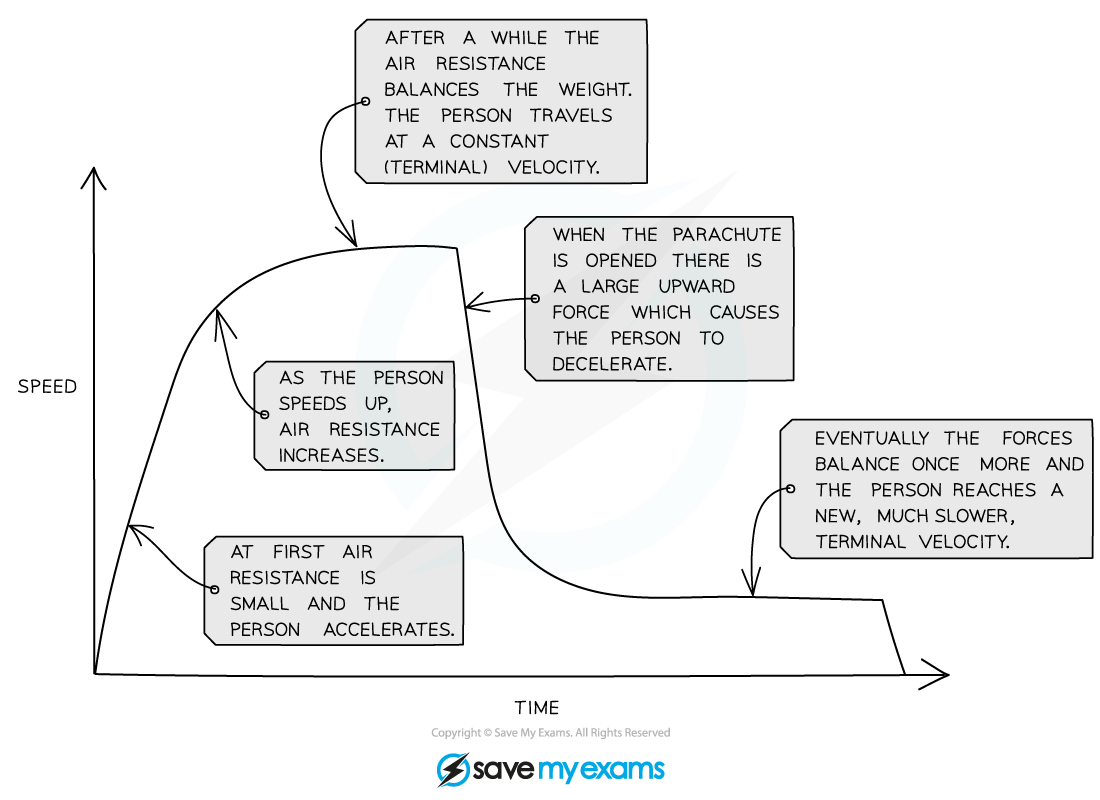Weight & Mass (WJEC GCSE Science (Double Award)) : Revision Note
Weight & Mass
Mass
Mass is defined as
The amount of matter in an object
The standard SI unit for mass is the kilogram (kg)
Consequently, mass is the property of an object that resists change in motion
The greater the mass of an object, the more difficult it is to speed it up, slow it down, or change its direction
A mass may sometimes be given in grams (g)
1000 g = 1 kg
1 g = 0.001 kg
Worked Example
An object has a mass of 2.7 kg.
State the number of grams in 2.7 kg.
Answer:
Step 1: State the conversion between g and kg
1 kg = 1000 g
Step 2: Convert 2.7 kg into g
2.7 kg = 2.7 × 1000 = 2700 g
Gravitational Field Strength
Gravitational field strength is defined as:
The force per unit mass acting on an object in a gravitational field
On Earth, this is equal to 10 N/kg
So, an object of mass 1 kg weights 10 N
Gravitational field strength is also known as acceleration of free fall or acceleration due to gravity
In this context, the units are m/s2
The value of g (gravitational field strength) varies from planet to planet depending on their mass and radius
Weight
Weight is a gravitational force on an object with mass
The standard SI units for force are newtons (N)
Weight is the effect of a gravitational field on a mass
Weight is defined as:
The force of gravity acting on an object
Because of weight:
Objects stay firmly on the ground
Objects will always fall to the ground
Satellites are kept in orbit
Weight can be calculated using the equation:
W = mg
Where:
W = weight (N)
m = mass (kg)
g = gravitational field strength (N/kg)
Weight vs Mass
An object’s mass always remains the same, however, its weight will differ depending on the strength of the gravitational field on the planet or stellar object it is on or near
For example, the gravitational field strength on the Moon is 1.63 N/kg, meaning an object’s weight will be about 6 times less than on Earth
Comparing your Weight on Earth and the Moon

On the moon, your mass will stay the same but your weight will be much lower due to the smaller gravitational field strength
Worked Example
NASA's Artemis mission aims to send the first woman astronaut to the Moon. Isabelle hopes to one day become an astronaut. She has a mass of 40 kg.
Comment on the difference between Isabelle's weight on Earth, and her weight on the Moon.
Take the Earth's gravitational field strength as 10 N/kg, and the Moon's gravitational field strength as 2 N/kg.
Answer:
Step 1: State the equation linking weight and mass
The equation linking weight and mass is:
W = m × g
Step 2: List the known values
The question instructs us to take the Earth's gravitational field strength as 10 N/kg
The question also instructs us to take the Moon's gravitational field strength as 2 N/kg
Mass, m = 40 kg
Step 3: Calculate Isabelle's weight on Earth
Substituting the values of mass and Earth's gravitational field strength into the equation gives:
W = 40 × 10 = 400 N
Step 4: Calculate Isabelle's weight on the Moon
Substituting the values of mass and the Moon's gravitational field strength into the equation gives:
W = 40 × 2 = 80 N
Step 5: Comment on the two values of weight
Isabelle's weight is greater on Earth than on the Moon
This is because the Earth has a larger gravitational field strength than the Moon, so Isabelle's weight force (the force of gravity pulling down on her) is larger on Earth than on the Moon
Examiner Tips and Tricks
It is a common misconception that mass and weight are the same, but they are very different. An objects mass is the same no matter where it is in the universe. An object's weight changes depending on where it is within a gravitational field. Your mass is the same on Earth and the Moon but is different on Earth and the Moon.
Higher-tier students can rearrange the weight equation with the help of the formula triangle:
The Formula Triangle For the Weight Equation

Use the formula triangle to help you rearrange the equation
Terminal Speed
Falling objects experience two forces:
Weight (due to gravity)
Air resistance (due to friction)
Air Resistance and Speed

The skydiver initially accelerates downwards due to her weight. The upward air resistance increases as she falls until it eventually grows big enough to balance the force of her weight and she reaches terminal speed
The force of air resistance increases with speed
Initially, the upward air resistance is very small because the skydiver isn't falling very quickly
Therefore, there are unbalanced forces on the skydiver initially
As the skydiver speeds up, air resistance increases, eventually growing large enough to balance the downward weight force
Once air resistance equals weight, the forces are balanced
This means there is no longer any resultant force
Therefore, the skydiver's acceleration is zero - they now travel at a constant speed
This is called their terminal velocity or terminal speed
A Speed-Time Graph of a Falling Parachutist

Graph showing how the velocity of a skydiver changes during the descent
Worked Example
A parachuter jumps out of an aircraft and after a few seconds of descent opens their parachute.
Choose words from the list to complete the sentences below:
Air Resistance Downwards Decelerates Accelerates Decreases Constant Speed Equal |
(a) When the parachute is opened a big __________ force acts upwards. This is bigger than the person's weight which acts __________. The resultant force acts upwards so the person __________.
(b) As the person's speed __________, the air resistance decreases and the deceleration decreases.
(c) Eventually the speed becomes so slow that the air resistance and weight become __________ and the person falls at a lower __________.
Answer:
Part (a)
When the parachute is opened then the air resistance increases:
When the parachute is opened a big air resistance force acts upwards. This is bigger than the person's weight which acts downwards. The resultant force acts upwards so the person decelerates.
Part (b)
As the person falls the upward air resistance force decreases closer to the downward weight force:
As the person's speed decreases, the air resistance decreases and the deceleration decreases.
Part (c)
The resultant forces become equal:
Eventually, the speed becomes so slow that the air resistance and weight become equal and the person falls at a slower constant speed.
Examiner Tips and Tricks
The force of gravity on an object is called its weight. If you are asked to name this force, use this word. Don't call it 'gravity', as this term could also mean gravitational field strength, so might be marked wrong. Additionally, remember to identify air resistance as the upward force on a falling object. This force gets larger as the object speeds up, but the weight of the object stays constant. Don't confuse 'air resistance' with 'air pressure' - these are two different concepts!

You've read 0 of your 5 free revision notes this week
Sign up now. It’s free!
Did this page help you?
